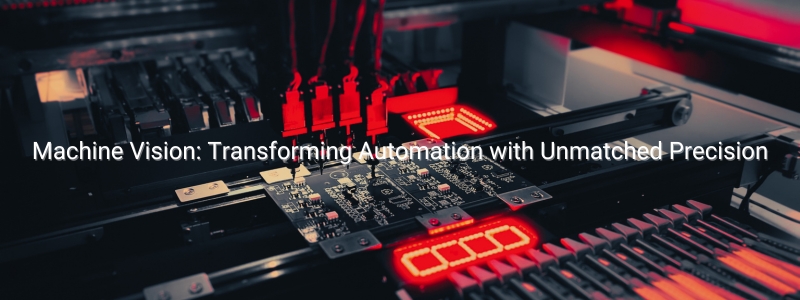
Machine Vision: Transforming Automation with Unmatched Precision
Introduction to Machine Vision
In today’s fast-paced industrial landscape, machine vision has emerged as a cornerstone technology for automation. By integrating advanced cameras, lenses, lighting, and software, machine vision systems enable unparalleled accuracy in tasks such as inspection, measurement, and sorting. For technicians and engineers, understanding the components of a machine vision system is key to optimizing production lines and achieving consistent quality control.
What is Machine Vision?
Machine vision refers to the ability of automated systems to visually interpret their environment using advanced imaging technology. By capturing and analyzing images, machine vision systems can make decisions with high precision, speed, and consistency.
While computer vision is a broader discipline used in diverse fields like healthcare and entertainment, machine vision specifically focuses on industrial applications, such as quality inspection, defect detection, and automation in production lines.
Why is Machine Vision Essential?
Machine vision bridges the gap between manual inspection and automated processes. It enables industries to:
- Perform detailed inspections at high speeds.
- Reduce waste and improve product quality.
- Measure dimensions and identify defects with extreme precision.
- Sort and classify products efficiently, even in high-volume operations.
By surpassing human capabilities in resolution, speed, and accuracy, machine vision delivers unparalleled benefits to industries striving for efficiency and quality.
Key Components of Machine Vision Systems
1. Cameras: The Core of Machine Vision
Cameras capture the visual data necessary for analysis. Depending on the application, various types of cameras—monochrome, color, or 3D—can be used. The camera’s resolution and frame rate determine the system’s ability to handle complex and fast-moving tasks.
2. Lenses: Precision in Focus
Lenses influence the clarity, depth, and accuracy of captured images. Selecting high-quality lenses reduces distortion, ensuring the camera captures the necessary details for precise analysis.
3. Lighting: Enhancing Image Quality
Proper lighting highlights critical features of the inspected object, eliminating shadows and glare. Techniques such as backlighting or structured lighting improve the system’s ability to analyze intricate details.
4. Filters: Refining Visual Data
Filters block unwanted wavelengths or enhance specific features, improving the system’s accuracy. For example, polarizing filters reduce reflections, while color filters isolate specific tones for better analysis.
5. Software: The Intelligence of Machine Vision
Software drives the system’s decision-making process. Modern AI-powered software can learn from experience, improving inspection accuracy and adapting to complex scenarios.
6. Mounting Solutions: Stability and Accuracy
Robust mounting ensures that cameras and lights remain securely positioned for consistent image capture. Adjustable brackets and fixed mounts enhance flexibility and precision.
Integrating Machine Vision Systems
Seamless Integration with Existing Infrastructure
When adding machine vision to existing production lines, compatibility is crucial. Modular systems minimize downtime and simplify installation.
Fine-Tuning for Peak Performance
Optimizing camera settings, lenses, and lighting ensures that all components work harmoniously. Regular calibration and maintenance are essential for consistent results.
Training and Support
Proper training equips technicians to operate and maintain machine vision systems effectively. At Machine Vision Shop, we provide comprehensive training programs and expert consultations to maximize system performance.
Applications of Machine Vision
1. Quality Control and Inspection
Machine vision excels in detecting defects that human inspectors might overlook. It ensures consistent product quality, reducing waste and customer complaints.
2. Measurement and Gauging
By analyzing images, machine vision systems measure dimensions, angles, and tolerances with precision, critical in manufacturing and aerospace industries.
3. Robotics and Automation
Machine vision guides robots in tasks like assembly, picking and placing, and navigation, enhancing automation efficiency in production facilities.
4. Sorting and Identification
From logistics to food processing, machine vision systems sort items based on visual characteristics such as color, size, and shape, streamlining operations.
Why Choose Machine Vision Shop?
At Machine Vision Shop, we offer:
- A wide selection of cameras, lenses, lights, filters, and software.
- Expert advice tailored to your application needs.
- Training and support to ensure successful system implementation.
Whether you’re building a new machine vision system or upgrading an existing one, our products and expertise will help you achieve your goals.


